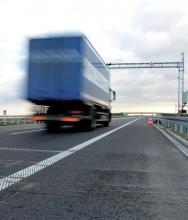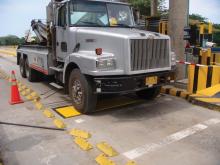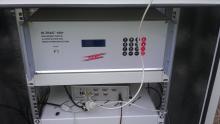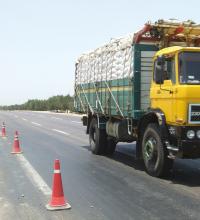Guy Woodford reports on a major new Weigh in Motion system, big WIM solution deals and how a leading firm in the sector is warning UK fleet operators to be aware of how leaner enforcement work is helping authorities detect more overloaded vehicles Kapsch TrafficCom announced its keenly awaited new Weigh in Motion (WIM) solution at this year’s ITS European Congress in Dublin, Ireland. The sector-renowned Austrian firm’s latest solution uses a number of sensors and loops to detect whether the vehicle exceeds
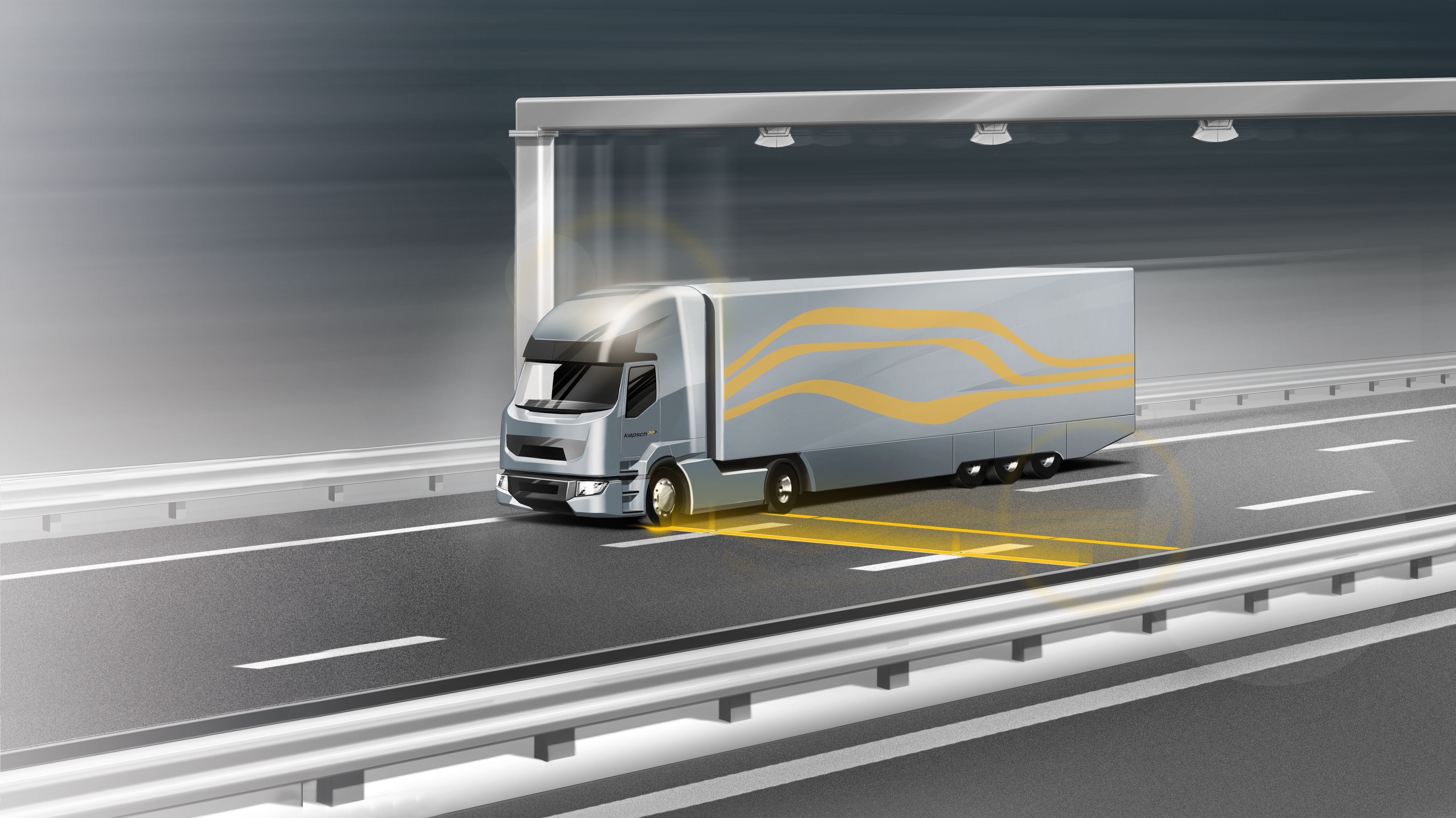
Pic: Kapsch TrafficCom
Guy Woodford reports on a major new Weigh in Motion system, big WIM solution deals and how a leading firm in the sector is warning UK fleet operators to be aware of how leaner enforcement work is helping authorities detect more overloaded vehicles
259 Kapsch TrafficCom announced its keenly awaited new Weigh in Motion (WIM) solution at this year’s ITS European Congress in Dublin, Ireland. The sector-renowned Austrian firm’s latest solution uses a number of sensors and loops to detect whether the vehicle exceeds the permitted weight along with a number of other enforcement functions. The sensors identify the vehicle by its number plates as it travels at high speed, without disturbing the traffic flow. This data is then stored and evaluated via either a mobile enforcement vehicle or a central system.
The new Kapsch TrafficCom WIM solution can be used by customers in combination with Kapsch Force, a comprehensive and fully integrated road safety enforcement suite, which was launched at the Traffex event in Birmingham, England in April 2013. Kapsch Force supports the vast majority of enforcement applications – red light enforcement, spot and section speed monitoring, lane enforcement, traffic surveillance and Weigh-In-Motion (WIM). The new WIM solution is pre-integrated with Kapsch Force, minimising project risk and ensuring seamless processes across various enforcement applications, from capturing vehicle data to handling infringements according to a given legislative environment. The new solution can also be integrated with Kapsch’s ETC solutions allowing it to implement weight based tolling schemes.
There is a clear need for WIM technology, according to Kapsch TrafficCom, with many road networks seeing increased heavy traffic across Europe. An overloaded vehicle axle has a bearing on the pace of road surface erosion, it increases noise pollution, reduces the braking distance, and other parameters which decreases safety on the one hand and increases the costs for the maintenance of road infrastructure. In the Netherlands, for example, it’s been shown that the increased maintenance costs of overloaded trucks could be as high as 25%. Therefore, WIM devices could pay for themselves in a relatively short time due to a decreasing number of overloaded trucks and fines generated by trucks still exceeding weight limits.
Peter Ummenhofer, manager for ITS solutions at Kapsch TrafficCom, said, “The pressure on the costs for repair and maintenance of the road networks is increasing as more traffic uses the roads. Weigh in Motion assures higher road safety, reduces wear and tear by a decreasing number of overloaded trucks and therefore is an important tool to avoid increasing uncontrolled heavy goods traffic. In addition Weigh in Motion has the potential to implement weight based tolling schemes which may be introduced in the future in order to reduce the number of trucks driving around without being loaded helping to further reduce emissions.”
Canadian firm3508 International Road Dynamics has secured a five-year US$5.6 million contract from the Hawaii state Department of Transportation (HDOT) to implement a state-wide Continuous Traffic Monitoring (CTM) Data Collection Goods and Services system.
CTM systems collect traffic volume, speed, vehicle classification, and weight data to support HDOT’s continuous traffic monitoring programme on the state’s highways. The IRD-Hawaii DOT contract covers the supply, operation and maintenance of the CTM systems, as well as data services that include the provision for real-time display via web access.
There are currently 72 permanent traffic monitoring sites that will be incorporated into the Hawaii project located on six of its eight major islands (Oahu, Maaui, Hawaii, Lanai, Molookai, and Kauaai). More sites will be added during the length of the project. IRD said the sites and the data collected will be consistent with guidelines published in the current2410 Federal Highway Administration (FHWAA) Traffic Monitoring Guide (TMG).
IRD says it has had a successful working relationship with HDOT going back to its original Truck Weigh in Motion station on Sand Island Parkway in 1986.
“This project is another example of our drive to build long-term partnerships with our valued customers and our goal to increase our recurring maintenance and data services business, “ said Terry Bergan, IRD's president and CEO. “We are proud of our positive ongoing relationship with the Hawaii Department of Transportation."
6831 TDC Systems has supplied 20 high speed Weigh In Motion systems for overweight pre-selection and enforcement in Saudi Arabia.
The Ministry of Transport for Saudi Arabia is said by the firm to be committed to improving road safety and protecting their bridges and highways from the damage caused by overweight vehicles.
TDC’s Weigh In Motion and Automatic Number Plate Recognition (ANPR) system is being installed as an overweight vehicle targeting and enforcement tool. The system combines TDC’s HI-TRAC 100+ WIM and HITRAC ANPR Cameras with the precision of2458 Kistler Lineas Quartz WIM Sensors. The WIM sensors are installed on the highway 1km ahead of the low speed enforcement weigh stations. The system calculates the axle and gross vehicle overloads and takes an image of the vehicle licence plate together with a contextual overview image. Each time an overloaded vehicle is detected, it is diverted into a weighing station for inspection and enforcement.
TDC Systems says coupling its HI-TRAC 100+ WIM/ANPR system with Kistler Lineas Quartz WIM Sensors provides the required accuracy to identify and weigh vehicles with very high enforcement tolerances.
The international firm with its HQ in the UK and offices in Australia and Malaysia is managing and delivering the project in partnership with the Shibh Al Jazira Contracting Company based in Riyadh.
The prestigious contract is said by TDC Systems to be part of a growing list of international clients choosing WIM solutions from the firm, which is celebrating its 15th anniversary.
Earlier this year, Andy Lees, TDC Systems business development manager and chairman of the International Society for Weigh in Motion (ISWIM) Vendors College, attended an enforcement seminar in Brussels featuring representatives from enforcement authorities covering most of Europe, and parts of Canada, South Africa, and Brazil, and from WIM specialists, vendors and the EU Commission.
Among topics discussed at the seminar were developments in WIM and in the enforcement of HGV’s, EU Directive 96/53/E on weights and dimensions for road transport, what developments within WIM enforcement are most needed, and the Ideal future situation needing to be reached. Lees chaired the discussion on the development in enforcement of HGV’s and said the seminar would lead to follow-up meetings to assess progress on tackling some the challenges discussed.
One leading WIM technology manufacturer is urging UK fleet operators to become more aware of VOSA’s (Vehicle and Operator Services Agency) increasing effectiveness at detecting overloaded vehicles, and the increasingly severe penalties that can be enforced; ultimately, losing the fleet operator licence.
The5432 Department for Transport (DfT) increased fixed penalty levels from August 16, 2013. The legislation shows that a €70.25 (£60) penalty is now levied for a 0%-9.99% overload, €140.51 (£120) for a 10%-14.99% overload, €234.18 (£200) for a 15% and above overload, with a court summons being the most likely outcome for vehicles overloaded by more than 30%.
“The most recent fixed penalty levels, combined with the figures published in the latest VOSA Report should really serve as a warning to fleet operators that there is a greater risk of overloaded vehicles being detected on UK roads,” said Colin Smith, sales manager for Central Weighing, now part of6140 Avery Weigh-Tronix. “The prohibition rate in 2011/12 stands at 71% - an increase on the 69.5% in 2010/11 – and I expect this to increase further in the 2012/13 report.”
Smith said that what the prohibition rate shows is that VOSA has been investing in the right technology, and is now pinpointing non-compliant vehicles much more precisely. “This aligns with the strategy outlined by VOSA in its annual business Plan of balancing enforcement interventions with educational initiatives,” he added.
Over the last few years VOSA has significantly reduced its head count and costs, while investing in technology that has improved its pre-selection of vehicle checks. This includes WIM sensors linked to ANPR cameras to detect potentially overloaded vehicles. This is combined with the Operator Compliance Risk Score (OCRS) system used by VOSA to target overloaded vehicles more effectively, again contributing to improved pre-selection.
Smith continued: “Considering the budget cuts at VOSA it would be easy for fleet operators to become complacent and to believe that enforcement activity for overloading is not as active. However, in recent years we have seen VOSA evolve into a leaner animal, and one that is now better equipped than ever to target overloaded vehicles. What this means is that the owners of businesses, transport managers and drivers all need to be aware of the risks of overloading and the penalties that can come as a result of it.”
In recent years there has been a fundamental shift in how businesses invest in any new equipment – particularly something like overload detection and prevention technology, which could be deemed unimportant. Instead of the middle management having the authority to authorise the purchase of equipment like this, it must now be approved by those in the very highest echelons of a company.
“It is impossible to get away from the fact that time is money, but with fleet compliance becoming more critical and high risk, it is important for business owners to look at the bigger picture,” said Smith. “The potential cost of having an operator license revoked is far greater than any relatively minimal savings that might be made by avoiding weighing a vehicle. This is why investment in vehicle weighing technology, such as Weigh in Motion axle weighing equipment, makes sound financial sense, as well as being important for protecting drivers and other road users.”
The new Kapsch TrafficCom WIM solution can be used by customers in combination with Kapsch Force, a comprehensive and fully integrated road safety enforcement suite, which was launched at the Traffex event in Birmingham, England in April 2013. Kapsch Force supports the vast majority of enforcement applications – red light enforcement, spot and section speed monitoring, lane enforcement, traffic surveillance and Weigh-In-Motion (WIM). The new WIM solution is pre-integrated with Kapsch Force, minimising project risk and ensuring seamless processes across various enforcement applications, from capturing vehicle data to handling infringements according to a given legislative environment. The new solution can also be integrated with Kapsch’s ETC solutions allowing it to implement weight based tolling schemes.
There is a clear need for WIM technology, according to Kapsch TrafficCom, with many road networks seeing increased heavy traffic across Europe. An overloaded vehicle axle has a bearing on the pace of road surface erosion, it increases noise pollution, reduces the braking distance, and other parameters which decreases safety on the one hand and increases the costs for the maintenance of road infrastructure. In the Netherlands, for example, it’s been shown that the increased maintenance costs of overloaded trucks could be as high as 25%. Therefore, WIM devices could pay for themselves in a relatively short time due to a decreasing number of overloaded trucks and fines generated by trucks still exceeding weight limits.
Peter Ummenhofer, manager for ITS solutions at Kapsch TrafficCom, said, “The pressure on the costs for repair and maintenance of the road networks is increasing as more traffic uses the roads. Weigh in Motion assures higher road safety, reduces wear and tear by a decreasing number of overloaded trucks and therefore is an important tool to avoid increasing uncontrolled heavy goods traffic. In addition Weigh in Motion has the potential to implement weight based tolling schemes which may be introduced in the future in order to reduce the number of trucks driving around without being loaded helping to further reduce emissions.”
Canadian firm
CTM systems collect traffic volume, speed, vehicle classification, and weight data to support HDOT’s continuous traffic monitoring programme on the state’s highways. The IRD-Hawaii DOT contract covers the supply, operation and maintenance of the CTM systems, as well as data services that include the provision for real-time display via web access.
There are currently 72 permanent traffic monitoring sites that will be incorporated into the Hawaii project located on six of its eight major islands (Oahu, Maaui, Hawaii, Lanai, Molookai, and Kauaai). More sites will be added during the length of the project. IRD said the sites and the data collected will be consistent with guidelines published in the current
IRD says it has had a successful working relationship with HDOT going back to its original Truck Weigh in Motion station on Sand Island Parkway in 1986.
“This project is another example of our drive to build long-term partnerships with our valued customers and our goal to increase our recurring maintenance and data services business, “ said Terry Bergan, IRD's president and CEO. “We are proud of our positive ongoing relationship with the Hawaii Department of Transportation."
The Ministry of Transport for Saudi Arabia is said by the firm to be committed to improving road safety and protecting their bridges and highways from the damage caused by overweight vehicles.
TDC’s Weigh In Motion and Automatic Number Plate Recognition (ANPR) system is being installed as an overweight vehicle targeting and enforcement tool. The system combines TDC’s HI-TRAC 100+ WIM and HITRAC ANPR Cameras with the precision of
TDC Systems says coupling its HI-TRAC 100+ WIM/ANPR system with Kistler Lineas Quartz WIM Sensors provides the required accuracy to identify and weigh vehicles with very high enforcement tolerances.
The international firm with its HQ in the UK and offices in Australia and Malaysia is managing and delivering the project in partnership with the Shibh Al Jazira Contracting Company based in Riyadh.
The prestigious contract is said by TDC Systems to be part of a growing list of international clients choosing WIM solutions from the firm, which is celebrating its 15th anniversary.
Earlier this year, Andy Lees, TDC Systems business development manager and chairman of the International Society for Weigh in Motion (ISWIM) Vendors College, attended an enforcement seminar in Brussels featuring representatives from enforcement authorities covering most of Europe, and parts of Canada, South Africa, and Brazil, and from WIM specialists, vendors and the EU Commission.
Among topics discussed at the seminar were developments in WIM and in the enforcement of HGV’s, EU Directive 96/53/E on weights and dimensions for road transport, what developments within WIM enforcement are most needed, and the Ideal future situation needing to be reached. Lees chaired the discussion on the development in enforcement of HGV’s and said the seminar would lead to follow-up meetings to assess progress on tackling some the challenges discussed.
One leading WIM technology manufacturer is urging UK fleet operators to become more aware of VOSA’s (Vehicle and Operator Services Agency) increasing effectiveness at detecting overloaded vehicles, and the increasingly severe penalties that can be enforced; ultimately, losing the fleet operator licence.
The
“The most recent fixed penalty levels, combined with the figures published in the latest VOSA Report should really serve as a warning to fleet operators that there is a greater risk of overloaded vehicles being detected on UK roads,” said Colin Smith, sales manager for Central Weighing, now part of
Smith said that what the prohibition rate shows is that VOSA has been investing in the right technology, and is now pinpointing non-compliant vehicles much more precisely. “This aligns with the strategy outlined by VOSA in its annual business Plan of balancing enforcement interventions with educational initiatives,” he added.
Over the last few years VOSA has significantly reduced its head count and costs, while investing in technology that has improved its pre-selection of vehicle checks. This includes WIM sensors linked to ANPR cameras to detect potentially overloaded vehicles. This is combined with the Operator Compliance Risk Score (OCRS) system used by VOSA to target overloaded vehicles more effectively, again contributing to improved pre-selection.
Smith continued: “Considering the budget cuts at VOSA it would be easy for fleet operators to become complacent and to believe that enforcement activity for overloading is not as active. However, in recent years we have seen VOSA evolve into a leaner animal, and one that is now better equipped than ever to target overloaded vehicles. What this means is that the owners of businesses, transport managers and drivers all need to be aware of the risks of overloading and the penalties that can come as a result of it.”
In recent years there has been a fundamental shift in how businesses invest in any new equipment – particularly something like overload detection and prevention technology, which could be deemed unimportant. Instead of the middle management having the authority to authorise the purchase of equipment like this, it must now be approved by those in the very highest echelons of a company.
“It is impossible to get away from the fact that time is money, but with fleet compliance becoming more critical and high risk, it is important for business owners to look at the bigger picture,” said Smith. “The potential cost of having an operator license revoked is far greater than any relatively minimal savings that might be made by avoiding weighing a vehicle. This is why investment in vehicle weighing technology, such as Weigh in Motion axle weighing equipment, makes sound financial sense, as well as being important for protecting drivers and other road users.”

